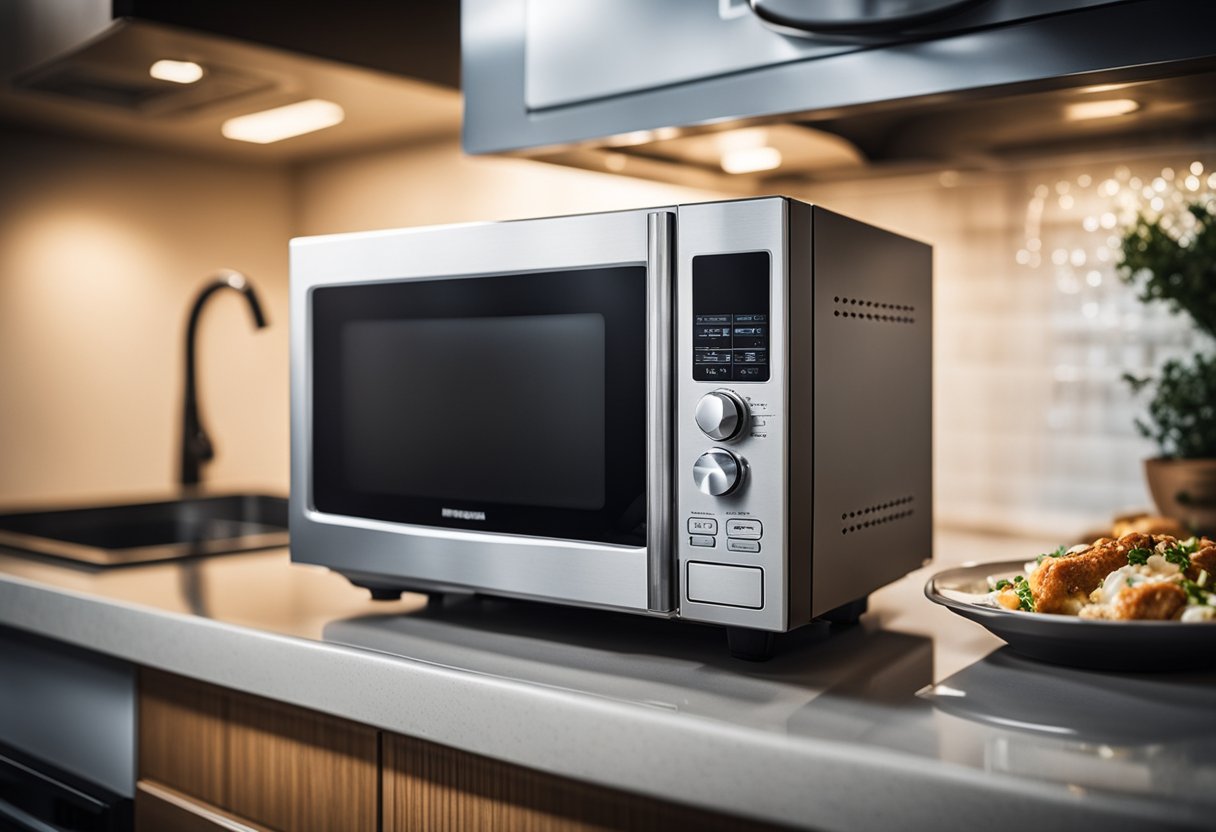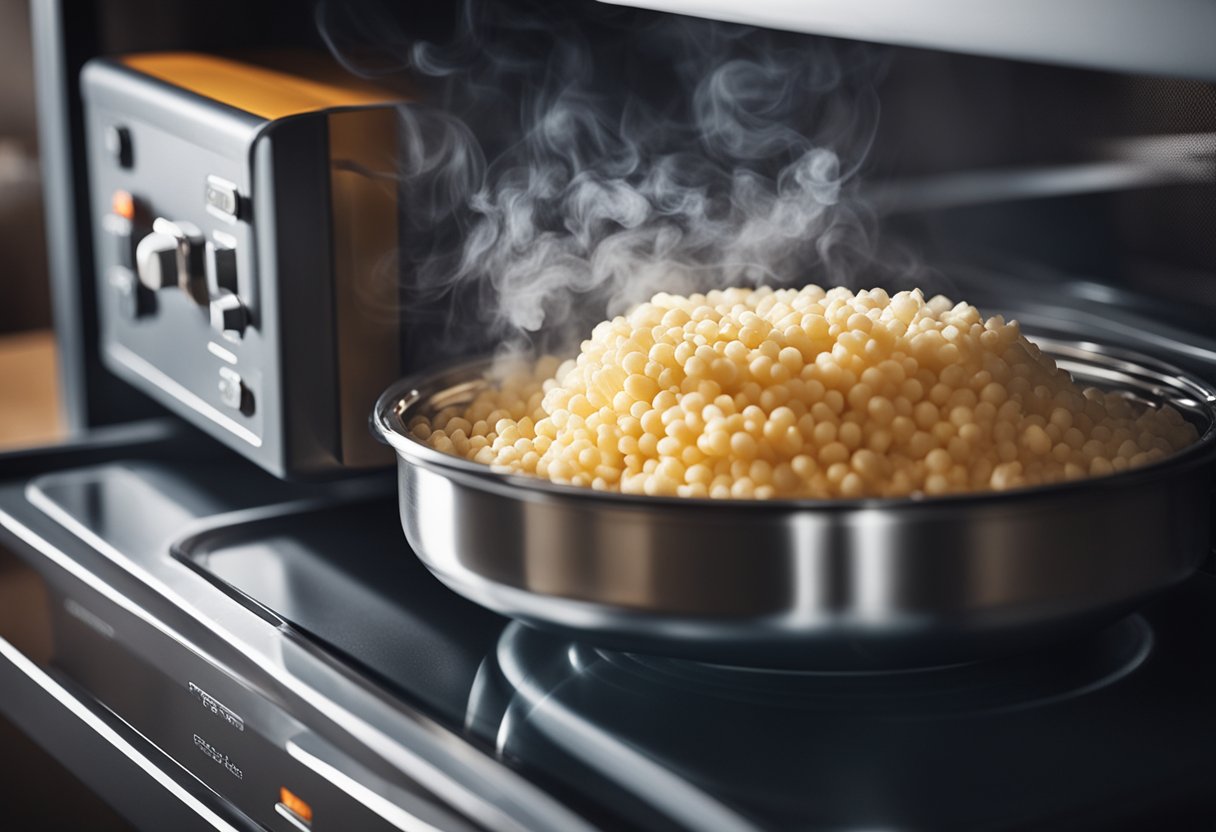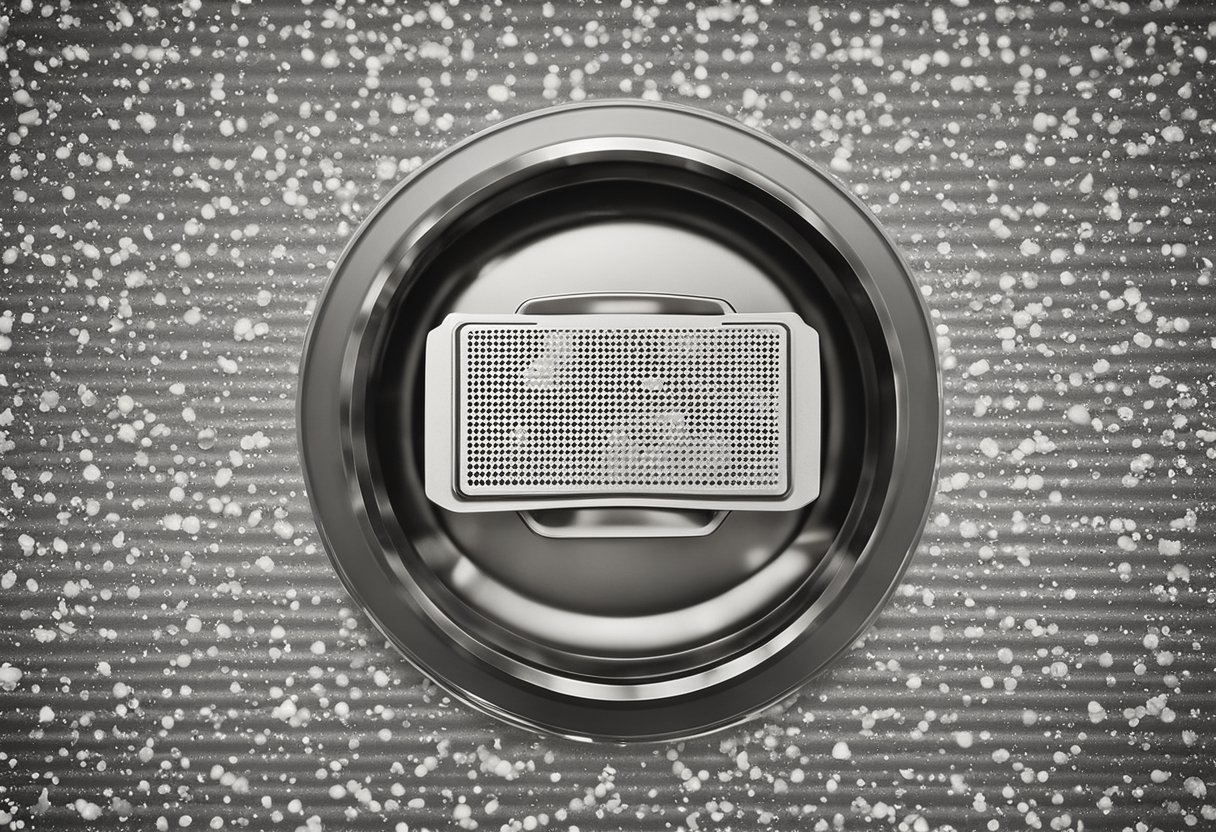Can you reheat Styrofoam in a microwave? This is a common question that many people ask. While Styrofoam is a convenient and affordable way to store and transport food, it is important to understand the potential risks associated with reheating it in a microwave.
In this article, I will explore the topic of reheating Styrofoam in a microwave and provide you with the information you need to make an informed decision.

Styrofoam is a type of expanded polystyrene foam that is commonly used in food packaging and containers. While it is lightweight and insulating, it can pose potential dangers when exposed to high temperatures, such as those produced by a microwave.
The heat from the microwave can cause the Styrofoam to melt and release harmful chemicals into your food. In addition, Styrofoam can also catch fire in a microwave, which can be a serious safety hazard.
Key Takeaways
- Reheating Styrofoam in a microwave can pose potential dangers, such as releasing harmful chemicals and causing fires.
- It is important to understand the microwave-safe symbols on your food containers to ensure safe reheating practices.
- Alternatives to Styrofoam, such as glass or ceramic containers, are a safer option for reheating food in the microwave.
Understanding Styrofoam
As someone who regularly uses Styrofoam containers to store and reheat food, it’s important to understand what Styrofoam is and how it works.
Styrofoam is a type of polystyrene, which is a synthetic polymer made from styrene monomers. It is commonly used in packaging materials, insulation, and disposable food containers. Styrofoam is lightweight, durable, and has excellent insulating properties.
However, when it comes to reheating food in Styrofoam containers, there are some concerns. Styrofoam is not microwave-safe by default, and heating it in a microwave can cause it to melt or release harmful chemicals.
It’s important to note that not all Styrofoam is created equal. Expanded polystyrene foam, which is commonly used in disposable food containers, is more likely to melt or release harmful chemicals when heated in a microwave.
On the other hand, extruded polystyrene foam, which is commonly used in insulation, is less likely to be affected by microwave heating.
To be safe, it’s best to avoid reheating food in Styrofoam containers altogether. Instead, transfer your food to a microwave-safe container, such as glass or ceramic.
If you must use a disposable container, look for one that is labeled as microwave-safe.
In summary, Styrofoam is a type of polystyrene that is commonly used in packaging materials and disposable food containers. While it has many benefits, it is not microwave-safe by default and can release harmful chemicals when heated.
To avoid any potential health risks, it’s best to avoid reheating food in Styrofoam containers and use microwave-safe containers instead.
Microwaving and Styrofoam
I often get asked if it’s safe to microwave Styrofoam. The answer is not straightforward, but I will do my best to explain.
Styrofoam is a type of plastic foam that is commonly used in food packaging. When heated in a microwave, Styrofoam can melt and potentially release chemicals into your food. This is especially true if the Styrofoam is not labeled as microwave safe.
While some types of foam are labeled as microwave-safe, it’s generally best to avoid using foam vessels for reheating food in a microwave oven. Instead, use microwave-safe containers made of glass, ceramic, or plastic.
If you do need to use Styrofoam in the microwave, make sure it’s labeled as microwave-safe and follow the manufacturer’s instructions.
It’s also a good idea to avoid heating fatty or oily foods in Styrofoam containers, as they can cause the container to break down and release chemicals into your food.
In summary, it’s best to avoid microwaving Styrofoam whenever possible. If you must use Styrofoam, make sure it’s labeled as microwave-safe and follow the manufacturer’s instructions.
Potential Dangers of Microwaving Styrofoam
As tempting as it may be to reheat your leftovers in the microwave, it is important to understand the potential dangers of microwaving Styrofoam.
Styrofoam is a type of plastic foam that is commonly used for food packaging and insulation.
When Styrofoam is exposed to high temperatures, it can melt and release harmful toxins and toxic compounds. These toxins can leach into your food, posing a risk to your health.
In fact, the U.S. Department of Health and Human Services has listed styrene, a chemical found in Styrofoam, as a “reasonably anticipated human carcinogen.”
In addition to the risk of cancer, microwaving Styrofoam can also be dangerous due to the risk of the container melting or catching fire.
Styrofoam is not designed to withstand high temperatures, and when exposed to heat, it can melt and release harmful chemicals into your food.
To ensure your safety, it is important to always use microwave-safe containers when reheating food in the microwave.
Look for containers that are labeled as microwave-safe or made from materials such as glass or ceramic that are designed to withstand high temperatures.
In summary, microwaving Styrofoam can be harmful to your health due to the risk of leaching harmful toxins and the danger of the container melting or catching fire. Always use microwave-safe containers to ensure your safety when reheating food in the microwave.
Health Concerns Related to Styrofoam
As a microwave-safe container, Styrofoam may seem like a convenient option for reheating food. However, there are some health concerns associated with this type of foam.
One of the key issues with Styrofoam is that it may contain a compound called styrene. According to the FDA, styrene is a chemical that can migrate from packaging materials into food.
Exposure to high levels of styrene is associated with health problems such as damage to the liver, kidneys, and the reproductive system.
Moreover, the International Agency for Research on Cancer (IARC) has classified styrene as a possible human carcinogen.
This means that exposure to styrene may increase the risk of developing cancer in humans. Studies have linked styrene exposure to cancers such as leukemia and lymphoma.
Another concern associated with Styrofoam is that it may release benzene when heated. According to the American Cancer Society, benzene is a known carcinogen that can cause cancer in humans.
Exposure to high levels of benzene is associated with health problems such as anemia, damage to the immune system, and an increased risk of developing cancers such as leukemia.
In summary, while Styrofoam may seem like a convenient option for reheating food, there are some health concerns associated with this type of foam. Exposure to styrene and benzene, which may be present in Styrofoam, can increase the risk of developing health problems such as cancer.
It is important to consider these health concerns when deciding whether to use Styrofoam for reheating food in the microwave.
Alternatives to Styrofoam for Reheating

As we have seen, reheating food in Styrofoam containers is not recommended. So, what are some alternatives? Here are a few options that you can use instead:
Microwave-safe containers
One of the best alternatives to Styrofoam for reheating food in the microwave is to use microwave-safe containers.
These containers are specifically designed to be used in the microwave and are made from materials that won’t melt or release harmful chemicals when heated. Look for containers that are labeled as “microwave-safe” to ensure that they are safe to use.
Glass or ceramic containers
Glass and ceramic containers are also great options for reheating food in the microwave. They are safe to use and won’t release any harmful chemicals when heated.
Plus, they are reusable and can be used over and over again, making them a more sustainable option than disposable containers.
Oven-safe containers
If you’re reheating food in the oven, it’s important to use oven-safe containers. These containers are made from materials that can withstand high temperatures and won’t melt or release harmful chemicals when heated. Look for containers that are labeled as “oven-safe” to ensure that they are safe to use.
Paper towels or aluminum foil
If you don’t have a microwave-safe or oven-safe container, you can also use paper towels or aluminum foil to cover your food when reheating it in the microwave or oven. This will help to prevent the food from splattering and will also help to keep it moist.
Metal or Pyrex
It’s important to note that metal and Pyrex containers should never be used in the microwave. However, they are safe to use in the oven and on the stove. If you’re reheating food on the stove, you can use a metal or Pyrex saucepan to heat it up.
Microwave-safe plates
If you’re reheating food in the microwave and don’t have a microwave-safe container, you can also use a microwave-safe plate. Make sure that the plate is labeled as “microwave-safe” to ensure that it is safe to use.
In conclusion, there are many alternatives to Styrofoam for reheating food in the microwave or oven.
By using microwave-safe containers, glass or ceramic containers, oven-safe containers, paper towels or aluminum foil, metal or Pyrex, or microwave-safe plates, you can safely and effectively reheat your food without any harmful side effects.
Safe Reheating Practices
When it comes to reheating food in a microwave, it is important to follow safe practices to avoid any potential health hazards. Here are some tips to ensure that your food is reheated safely:
Use Microwave-Safe Containers
When reheating food in a microwave, it is important to use containers that are labeled as microwave-safe. Styrofoam containers are not recommended for use in a microwave, as they can release harmful chemicals when heated. Instead, opt for glass or ceramic containers that are labeled as microwave-safe.
Check the Label
When purchasing food containers, be sure to check the label to ensure that they are safe for use in a microwave. Look for containers that are labeled as microwave-safe or that have a microwave-safe symbol on them.
Avoid Overheating
When reheating food in a microwave, be sure to avoid overheating. Overheating can cause the food to become dry and tough, and can also cause the container to melt or warp. To avoid overheating, start with a lower power setting and increase the time as needed.
Cover the Food
When reheating food in a microwave, it is important to cover the food to prevent it from drying out. Use a microwave-safe lid or cover the container with a microwave-safe plate or paper towel.
Stir the Food
When reheating food in a microwave, be sure to stir the food periodically to ensure that it heats evenly. This will also help to prevent any hot spots that can cause the food to become overcooked in some areas.
Don’t Reheat Leftovers More Than Once
When reheating leftovers in a microwave, it is important to only reheat them once. Reheating leftovers multiple times can cause harmful bacteria to grow, which can lead to food poisoning.
Take Precautions
When reheating food in a microwave, it is important to take precautions to avoid any potential hazards. Be sure to use oven mitts or a towel to handle hot containers, and be careful when removing the lid or cover to prevent steam burns.
By following these safe reheating practices, you can ensure that your food is reheated safely and without any potential health hazards.
Styrofoam in the Environment

Styrofoam, also known as polystyrene foam, is a popular material used in the building industry, packing peanuts, take-out containers, and other products.
Despite its widespread use, styrofoam is not biodegradable and can take hundreds of years to decompose in the environment. As a result, it poses a significant threat to the environment.
When styrofoam is not disposed of properly, it can end up in landfills, oceans, and other bodies of water. This can lead to pollution, harm to wildlife, and damage to the ecosystem.
Styrofoam is also a major source of litter, and its lightweight nature makes it easy to be carried away by the wind.
Fortunately, there are alternative materials to styrofoam that are more environmentally friendly. For example, many companies are now using biodegradable materials such as corn starch to create take-out containers and packing materials.
These materials break down easily in the environment and do not pose a threat to wildlife or the ecosystem.
In addition, plastic containers are also a popular alternative to styrofoam. While plastic is not biodegradable, it can be recycled and reused, making it a more sustainable option than styrofoam.
Many companies are now using recycled plastic to create new products, reducing the amount of waste in the environment.
Overall, it is important to be mindful of the impact that styrofoam can have on the environment. By using alternative materials and properly disposing of styrofoam, we can help reduce pollution, protect wildlife, and preserve the ecosystem for future generations.
Understanding Microwave-Safe Symbols

When it comes to reheating food in the microwave, it is essential to understand microwave-safe symbols. These symbols are usually found on plastic containers, including Styrofoam, and indicate whether the container is safe to use in the microwave or not.
The most common microwave-safe symbol is three wavy lines stacked on top of each other. This symbol indicates that the container is safe to use in the microwave.
You can also find a microwave-safe label on some containers, which means that the container has been tested and approved by the FDA for microwave use.
However, not all microwave-safe containers have this symbol. Some containers may have a different symbol or no symbol at all. In such cases, it is best to avoid using the container in the microwave altogether.
Another symbol to look out for is the recycling symbol #5. This symbol indicates that the container is made of polypropylene, which is safe to use in the microwave. However, it is worth noting that not all containers made of polypropylene are microwave-safe.
It is also important to note that the absence of a microwave-safe symbol does not necessarily mean that the container is not safe to use in the microwave.
Some containers may be safe to use in the microwave, even if they do not have a symbol. However, if you are unsure, it is best to err on the side of caution and avoid using the container in the microwave.
In conclusion, understanding microwave-safe symbols is crucial when it comes to reheating food in the microwave.
Look out for the three wavy lines symbol, the microwave-safe label, and the recycling symbol #5. If a container does not have any of these symbols, it is best to avoid using it in the microwave.
Frequently Asked Questions
Is it safe to reheat food in Styrofoam?
It is generally not safe to reheat food in Styrofoam containers in the microwave. While some types of foam are labeled as microwave-safe, it is best to avoid using foam vessels for reheating food in a microwave oven.
Styrofoam is a type of expanded polystyrene (EPS) foam, which can melt or release harmful chemicals when heated. It is always best to transfer food to a microwave-safe container before reheating.
Can you microwave hefty Styrofoam?
Hefty Styrofoam containers should not be microwaved. These containers are usually made of EPS foam, which can melt or release harmful chemicals when heated. It is always best to transfer food to a microwave-safe container before reheating.
Can you put Styrofoam in the oven?
No, Styrofoam should not be put in the oven. Styrofoam is not heat-resistant and can melt or release harmful chemicals when exposed to high temperatures. It is always best to use oven-safe containers for baking or heating food in the oven.
How long can you microwave Styrofoam?
There is no specific time limit for microwaving Styrofoam. However, it is generally not safe to reheat food in Styrofoam containers in the microwave.
While some types of foam are labeled as microwave-safe, it is best to avoid using foam vessels for reheating food in a microwave oven.
What happens when you microwave Styrofoam?
When Styrofoam is microwaved, it can melt or release harmful chemicals. Styrofoam is a type of EPS foam, which can break down and release toxic chemicals like styrene when exposed to high temperatures. These chemicals can contaminate food and pose health risks.
How do you heat leftovers in Styrofoam?
It is generally not safe to heat leftovers in Styrofoam containers in the microwave. While some types of foam are labeled as microwave-safe, it is best to avoid using foam vessels for reheating food in a microwave oven.
It is always best to transfer food to a microwave-safe container before reheating.







